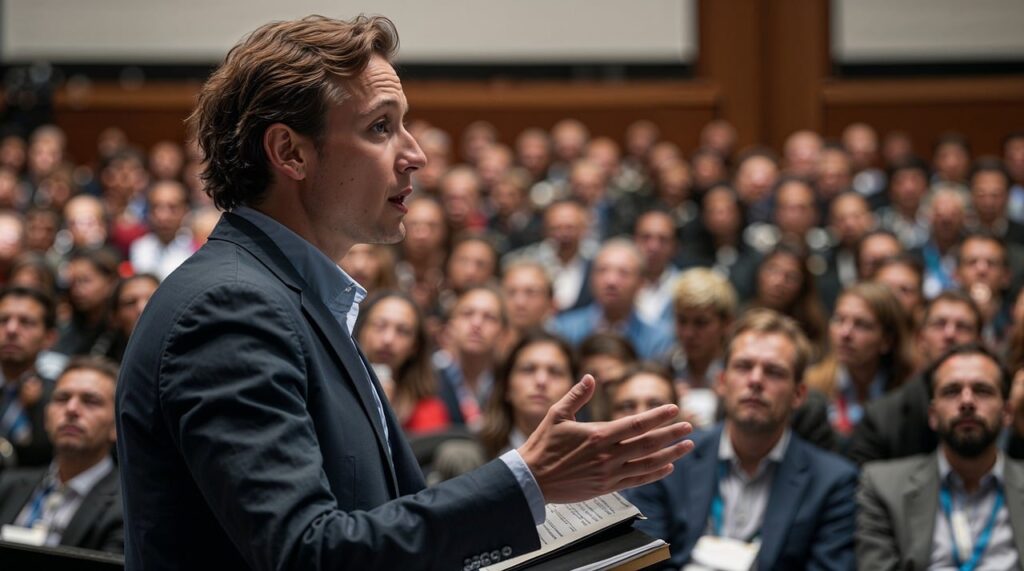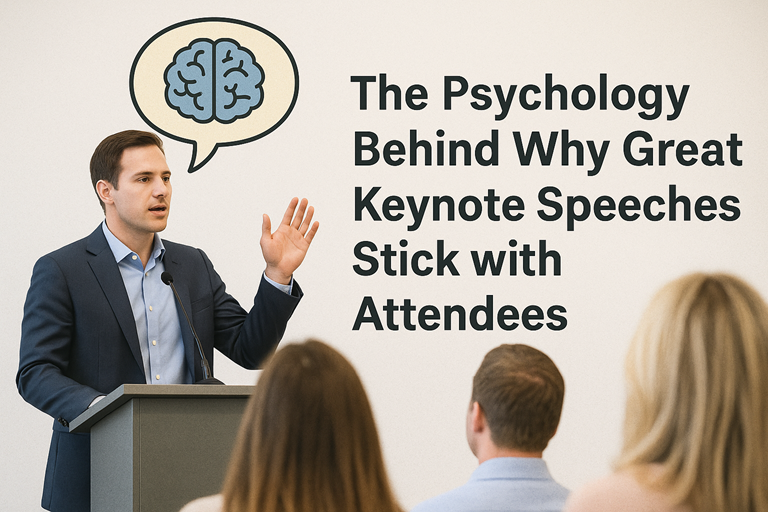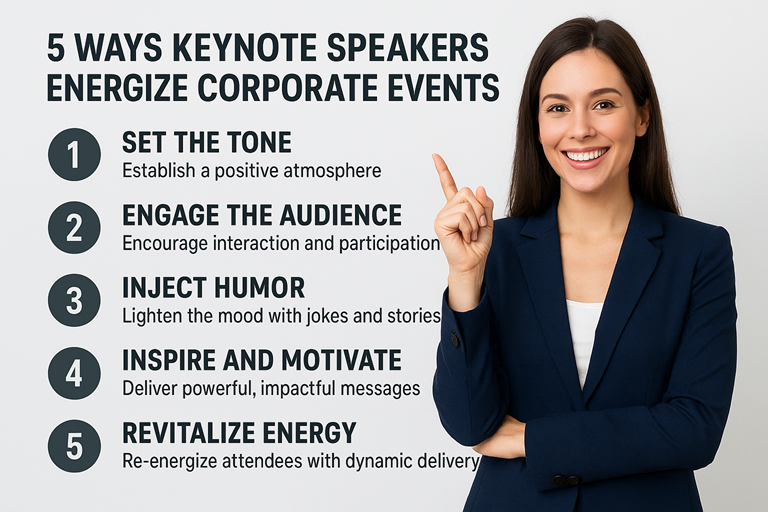The Unexpected Ways Keynote Speakers Add Value Beyond Their Time on Stage
When event organisers book a keynote speaker, they typically focus on the presentation itself: the expertise shared, the audience engagement, and the memorable moments created during those 45 minutes on stage. However, seasoned event professionals understand that exceptional keynote speakers deliver value that extends far beyond their allocated speaking slot, creating ripple effects that enhance events in surprising and meaningful ways.
Pre-Event Content Creation and Marketing Amplification
Months before stepping onto the stage, quality keynote speakers begin generating value through content creation and promotional activities. They often produce bespoke blog posts, video messages, or social media content specifically tailored to the event, helping to build anticipation and drive ticket sales. This collaborative approach to marketing creates authentic buzz that money can’t buy.
Many speakers also participate in podcast interviews, webinar series, or press interviews as part of the event promotion. These activities don’t just market the event—they position the entire conference or gathering as a thought leadership destination. When a respected industry figure speaks enthusiastically about an upcoming event, their endorsement carries significant weight with potential attendees.
The social media presence of keynote speakers can dramatically amplify an event’s reach. Their followers, often numbering in the thousands or tens of thousands, become aware of the event through organic posts and stories. This extended marketing reach provides exceptional return on investment, as the speaker’s personal brand becomes intertwined with the event’s reputation.
Enhanced Networking and Relationship Building
Professional keynote speakers understand that their role extends well beyond delivering a presentation. They actively participate in networking sessions, coffee breaks, and informal conversations, bringing their accessibility and expertise to smaller group interactions. These moments often prove more valuable to attendees than the main presentation itself.
During breaks and meal times, speakers frequently find themselves surrounded by delegates eager to discuss specific challenges or seek advice. Rather than retreating to green rooms or VIP areas, experienced speakers embrace these opportunities, creating genuine connections and providing personalised insights that attendees remember long after the event concludes.
The presence of a notable keynote speaker also elevates the perceived value of networking opportunities for all attendees. Other participants feel more motivated to engage in meaningful conversations, knowing they’re part of an event that attracts high-calibre speakers and, by extension, other accomplished professionals.
Content Enrichment Through Q&A Sessions and Workshops
Whilst the main keynote presentation follows a predetermined structure, the question-and-answer sessions that follow often provide the most practical value. Skilled speakers use these interactions to address specific industry challenges, offer tailored advice, and explore topics that resonate most strongly with the audience.
Many keynote speakers also offer additional workshops, masterclasses, or breakout sessions as part of their engagement. These smaller-format interactions allow for deeper exploration of key concepts and provide attendees with actionable takeaways they can implement immediately. The intimate setting of these sessions often leads to breakthrough moments and practical solutions that wouldn’t emerge in a larger auditorium setting.
Some speakers coordinate with event organisers to design follow-up sessions or panel discussions, ensuring that the insights shared during their keynote continue to resonate throughout the event programme. This integrated approach maximises the educational value and creates a more cohesive learning experience.
Long-term Brand Association and Credibility
The speakers chosen for keynote presentations become permanently associated with the event’s brand and reputation. This association continues long after the event concludes, as speakers often reference their participation in future presentations, interviews, and professional materials. The mutual brand enhancement benefits both parties and can attract future high-profile speakers who want to be associated with quality events.
Event organisers frequently leverage these relationships for future marketing efforts, using testimonials, case studies, or continued partnerships with previous keynote speakers. The credibility that comes from association with respected industry figures helps establish events as must-attend gatherings within their sectors.
This long-term brand value becomes particularly important for annual events or conference series. Previous keynote speakers often become informal ambassadors, recommending the event to colleagues and helping to attract both speakers and attendees for subsequent years.
Behind-the-Scenes Mentorship and Team Development
Many keynote speakers offer informal mentorship to event organisers, sharing insights about audience engagement, presentation techniques, and event management. This knowledge transfer helps organisers improve their skills and deliver better experiences for future events.
Speakers often provide feedback on event logistics, venue selection, and programme structure, offering perspectives gained from presenting at hundreds of similar gatherings. This constructive input helps organisers refine their approach and avoid common pitfalls that could diminish attendee satisfaction.
Some speakers also take time to mentor other presenters at the event, particularly those who are newer to public speaking. This collaborative spirit elevates the overall quality of presentations and creates a supportive environment that benefits all participants.
Post-Event Engagement and Community Building
The relationship between keynote speakers and event communities doesn’t end when the lights go down. Many speakers maintain connections with attendees through social media, professional networks, and follow-up communications. They often share additional resources, respond to questions that arose during their presentation, and continue conversations that began during the event.
Some speakers create exclusive content for event attendees, such as detailed implementation guides, video tutorials, or access to private online communities. These additional resources extend the value of their participation and help attendees apply the insights they’ve gained.
The ongoing engagement also helps event organisers maintain momentum between annual gatherings. When keynote speakers continue to interact with the event community throughout the year, they help sustain interest and engagement that translates into higher attendance and participation rates for future events.
Strategic Advisory and Industry Insights
Experienced keynote speakers often possess deep industry knowledge and extensive professional networks that prove valuable beyond their presentations. Many offer strategic advice to event organisers about industry trends, emerging topics, and potential future speakers who might resonate with the audience.
This advisory role helps events stay relevant and forward-thinking, ensuring that programme content remains fresh and addresses the most pressing challenges facing attendees. Speakers may suggest collaborative opportunities, potential partnerships, or innovative formats that could enhance future events.
The industry connections that keynote speakers bring can also open doors to new sponsorship opportunities, media coverage, or strategic partnerships that extend the event’s reach and impact.
Conclusion
The true value of exceptional keynote speakers lies not just in their time on stage, but in their holistic contribution to the event experience. From pre-event marketing and content creation to post-event community building and strategic advisory, quality speakers provide returns on investment that extend far beyond their speaking fees.
Event organisers who recognise and leverage these additional value streams create more successful gatherings, stronger professional communities, and lasting relationships that benefit all stakeholders. The next time you’re evaluating potential keynote speakers, consider not just their presentation skills, but their willingness and ability to contribute to these broader aspects of event success.
By choosing speakers who embrace their role as partners rather than mere presenters, you’ll discover that the right keynote speaker becomes an integral part of your event’s long-term success story, creating value that resonates long after the final applause fades away.









